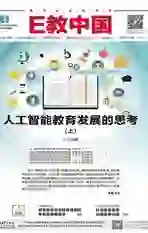Innovation Spotlights:Nine Dimensions for Supporting Powerful STEM Learning with Technology(Ⅲ)
2020-11-28
【譯题】 技术促进STEM学习的9个维度与创新案例(三)
5.Engineering Design Processes. Students plan, revise, implement, and test problem solutions using engineering design processes and appropriate support technologies.
Douglas L. Jamerson, Jr. Elementary School
At Jamerson Elementary in St Petersburg, Florida, children learn the engineering design process of “Plan, Design, Check, and Share” starting in kindergarten. By third grade, students learn about insulators and conductors and apply their knowledge when planning and making insulators with the goal of keeping ice cubes from melting. A variety of technology tools support the students engineering design and evaluation activities. Drawing on knowledge from previous lessons in earlier grades about insulators and conductors, students start by collaboratively planning their ice incubators by drawing out prototypes and talking through their ideas. During the design stage, students test the temperature of different materials, such as black and white paper and aluminum foil, to see which has the lowest temperature. After adding ice cubes to the insulators, the initial temperature is taken prior to leaving the insulators outside in the sun for 30 minutes. Students then check their design by using probeware to take multiple readings of the temperature, which are later graphed on a chart and used as data. Back in the classroom, students take out their ice vessels and measure the millimeters of liquid to see how much water had melted. As a class, students share out their design challenges to investigate which materials made the best insulators.
Design Tech High School
At Design Tech High School in Redwood City, California, students use different digital tools and the engineering design process to propose, plan, scope, and budget a semester-long engineering project. In small groups, students create a personalized, resin table, in one case to reflect aspects of the local peninsula and the previous location of the school. Students create digital drawings of their table, using the size dimensions to calculate the amount of materials they need. They use a Gantt chart to plan out their work for each week of the project, with students making adjustments as needed, for example, when they find out some of their materials are unavailable. Students learn important skills throughout the entire design process, initially working as a team and then separating into individual roles. Students learn to use new tools to manage and implement a process in which mistakes and solving unanticipated problems are both important and necessary.
6.Science Argumentation. Students use technology that supports science argumentation skills including presenting and evaluating evidence about scientific or mathematical claims.
Weaver Lake STEM Elementary School
At Weaver Lake STEM Elementary School in Maple Grove, Minnesota, fourth graders engage in a year-long study about lake health to learn science argumentation skills using data and evidence. Guided by the question, “Is the lake healthy?” students pay monthly visits to a nearby freshwater lake to collect environmental data with digital tools used by real scientists. Students use probes to record water and soil temperatures; collect samples of lake water; and use a turbidity tube to record water clarity. Students also take digital photographs of the lakefront to document seasonal observations at different times of the year.
Back in the classroom, students are tasked to create a website that lets the broader school community know whether or not the lake is healthy based on their data. Technology permits students to effectively display the evidence that they collected over the school year (including graphs and photos), articulate their arguments, and revise their arguments as needed. These data provide students with the opportunity and motivation to enhance and expand the efficacy of their scientific argument and presentation.
5.工程設计过程。学生使用工程设计流程和适当的技术来计划、修改、实施和测试问题解决方案。
案例学校:Douglas L. Jamerson, Jr. Elementary School
在Douglas L. Jamerson, Jr. Elementary School,孩子们从幼儿园就开始学习计划、设计、检查和分享的工程设计过程。到了三年级,学生们学习热绝缘体和热良导体,并在设计和制作热绝缘体时运用他们的知识,以防止冰块融化。各种技术工具支持学生的工程设计和评估活动。学生们从低年级上过的有关热绝缘体和热良导体的课程中汲取知识,通过画出模型并讨论自己的想法,共同规划自己的冰容器。在设计阶段,学生测试不同材料的温度,如黑色和白色的纸和铝箔,看看哪个温度最低。在向热绝缘体中加入冰块后,先测量初始温度,随后将它置于阳光下30分钟,再次测量温度。然后,学生们通过使用专业软件对温度进行多次测量来检查他们的设计,这些测量数据随后被绘制成图表并用作数据。回到教室,学生们拿出他们的冰容器,测量液体的毫米数,看看已经融化了多少水。在班级课上,学生们分享他们在设计的过程中遇到的挑战,调查得出哪些材料是最好的热绝缘体。
案例学校:Design Tech High School
在Design Tech High School,学生使用不同的数字工具和工程设计流程来建议、计划、评估和预算整个学期的工程项目。在小组中,学生创建一个个性化的树脂桌,以反映当地半岛和学校以前的位置。学生利用尺寸来计算所需材料的数量,以创建其桌子的数字绘图。他们使用甘特图来计划每周的项目工作,当然,学生可以根据需要调整项目规划,比如当他们发现某些材料无法使用时。他们将在整个设计过程中学习重要技能,最初是一个团队,然后进行分工,个人独立完成部分工作。学生将学习使用新工具来管理和实施一个项目进程,在该过程中,试错和解决无法预料的问题显得既重要又必要。
6.科学论证技能。学生使用支持科学论证技能的技术,包括提出和评估有关科学或数学主张的证据。
案例学校:Weaver Lake STEM Elementary School
在Weaver Lake STEM Elementary School,四年级学生进行了一项为期一年的关于湖泊健康的研究,学习使用数据和证据进行科学论证的技能。“这个湖是健康的吗?”在这个问题的引导下,学生们每月去附近的淡水湖,用真正科学家使用的数字工具收集环境数据。学生们用探针记录水和土壤温度;收集湖水样本;使用浊度管记录水的净度。学生们还拍摄了湖边的数码照片,以记录一年中不同时间的季节性观测数据。
回到教室后,学生们按要求创建一个网站,让更多的学校社区人员根据他们的数据判断这个湖是否健康。技术环境让学生可以有效地展示他们在学年中收集到的证据(包括图表和照片),阐明他们的论点,并根据需要修改他们的论点。这些数据为学生提供了机会和动力,以增强和扩大他们的科学论证和演示的有效性。
